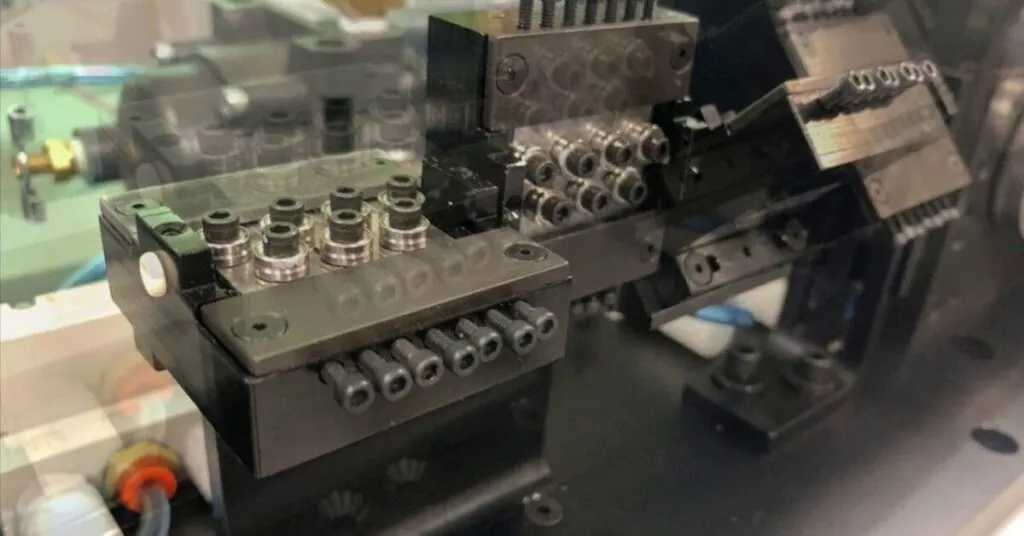Precision Wire Straightening: Perfecting Every Curve – In the world of manufacturing and engineering, precision is paramount. Wire straightening is a critical process that ensures wires are perfectly aligned, and free from kinks and bends. This article delves into the importance of wire straightening, the intricate process involved, the benefits of precision techniques, the industries that rely on it, and the future trends in wire straightening technology.
Table of Contents
Introduction to Wire Straightening and Its Importance
Wire straightening is the process of removing irregularities and deformities from metal wires, ensuring they are perfectly straight. This process is crucial for various applications where precise alignment is necessary for the functionality and aesthetics of the final product. Whether used in medical devices, electronics, or construction, the quality of wire straightening directly impacts the performance, safety, and reliability of the end products.
The Process of Precision Wire Straightening
Precision wire straightening involves several steps and sophisticated machinery to achieve the desired results:
Material Selection
The process begins with selecting the appropriate material. Different metals, such as stainless steel, aluminum, copper, and ferrous wire, are chosen based on their properties and the intended application.
Initial Inspection
Before straightening, wires undergo an initial inspection to identify any defects or irregularities. This step ensures that only high-quality materials proceed to the next stages.
Straightening Machines
The core of the wire straightening process involves specialized machines. These machines use rollers or die to apply controlled pressure and tension to the wire, correcting bends and kinks. The machinery is meticulously calibrated to achieve precise straightening without compromising the wire’s integrity.
Quality Control
After straightening, the wires undergo rigorous quality control checks. Precision measurement tools and techniques are used to ensure that the wires meet the specified tolerances and are free from any deformities.
Benefits of Using Precision Techniques
Precision wire straightening offers numerous advantages:
Enhanced Performance
Straight wires perform better in their applications. For instance, in medical devices, perfectly straight wires are essential for ensuring accurate and reliable performance.
Aesthetic Appeal
For products where appearance matters, such as in consumer electronics, straight wires contribute to a clean and professional look.
Reduced Waste
Precision techniques minimize material waste. By ensuring that wires are straight from the start, manufacturers reduce the need for rework and scrap, leading to cost savings.
Improved Safety
In applications like construction and aerospace, straight wires are crucial for structural integrity and safety. Precision straightening ensures that wires can withstand the required loads and stresses.
Consistency
Precision wire straightening guarantees consistent results. This consistency is vital for industries that rely on mass production and require uniformity in their products.
Industries That Rely on Precision Wire Straightening
Multiple industries depend on the accuracy and reliability of precision wire straightening:
Medical
In the medical field, precision straightened wires are used in surgical instruments, catheters, and orthodontic devices. The exacting standards of the medical industry necessitate the highest levels of precision and quality.
Aerospace
Aerospace applications demand materials that meet stringent specifications. Precision straightened wires are used in various components, including control cables and structural elements, ensuring safety and performance.
Automotive
The automotive industry uses precision straightened wires in components such as springs, engine parts, and electrical systems. These wires must meet rigorous standards to ensure vehicle reliability and safety.
Electronics
Consumer electronics, including smartphones and computers, require precision straightened wires for internal connections and components. The reliability and performance of these devices depend on the quality of the wires used.
Construction
In construction, precision straightened wires are used in reinforcing structures, electrical installations, and various building materials. The durability and safety of construction projects rely on these high-quality wires.
Future Trends in Wire Straightening Technology
The future of wire straightening technology is marked by continuous advancements aimed at improving efficiency, precision, and sustainability:
Automation and Robotics
Automation is set to revolutionize wire straightening. Robotic systems can handle wires with greater precision and speed, reducing human error and increasing production rates.
Advanced Materials
The development of new materials, such as high-strength alloys and composites, will enhance the capabilities of wire straightening. These materials offer superior performance characteristics, enabling the production of more durable and efficient components.
Sustainable Practices
Sustainability is becoming a key focus in manufacturing. Advances in wire straightening technology are aimed at reducing energy consumption and minimizing environmental impact.
Smart Technology
The integration of smart technology, such as IoT and AI, allows for real-time monitoring and adjustment of the wire straightening process. This innovation provides greater control and ensures optimal results.
Conclusion
Precision wire straightening is crucial across industries, enabling manufacturers to achieve high quality and performance. As technology advances, the future of wire straightening holds the promise of enhanced precision, efficiency, and sustainability, improving reliability for numerous applications.

Pradeep Sharma is a author the mind behind Techjustify, where I craft insightful blogs on technology, digital tools, gaming, AI, and beyond. With years of experience in digital marketing and a passion for tech innovation, I aim to simplify complex topics for readers worldwide.
My mission is to empower individuals with practical knowledge and up-to-date insights, helping them make informed decisions in the ever-evolving digital landscape.




